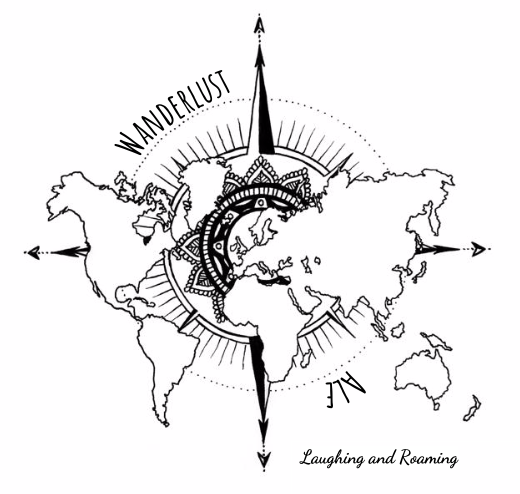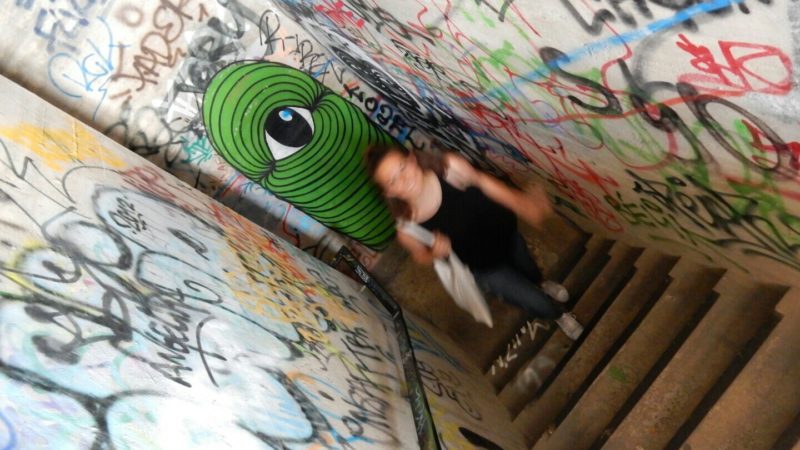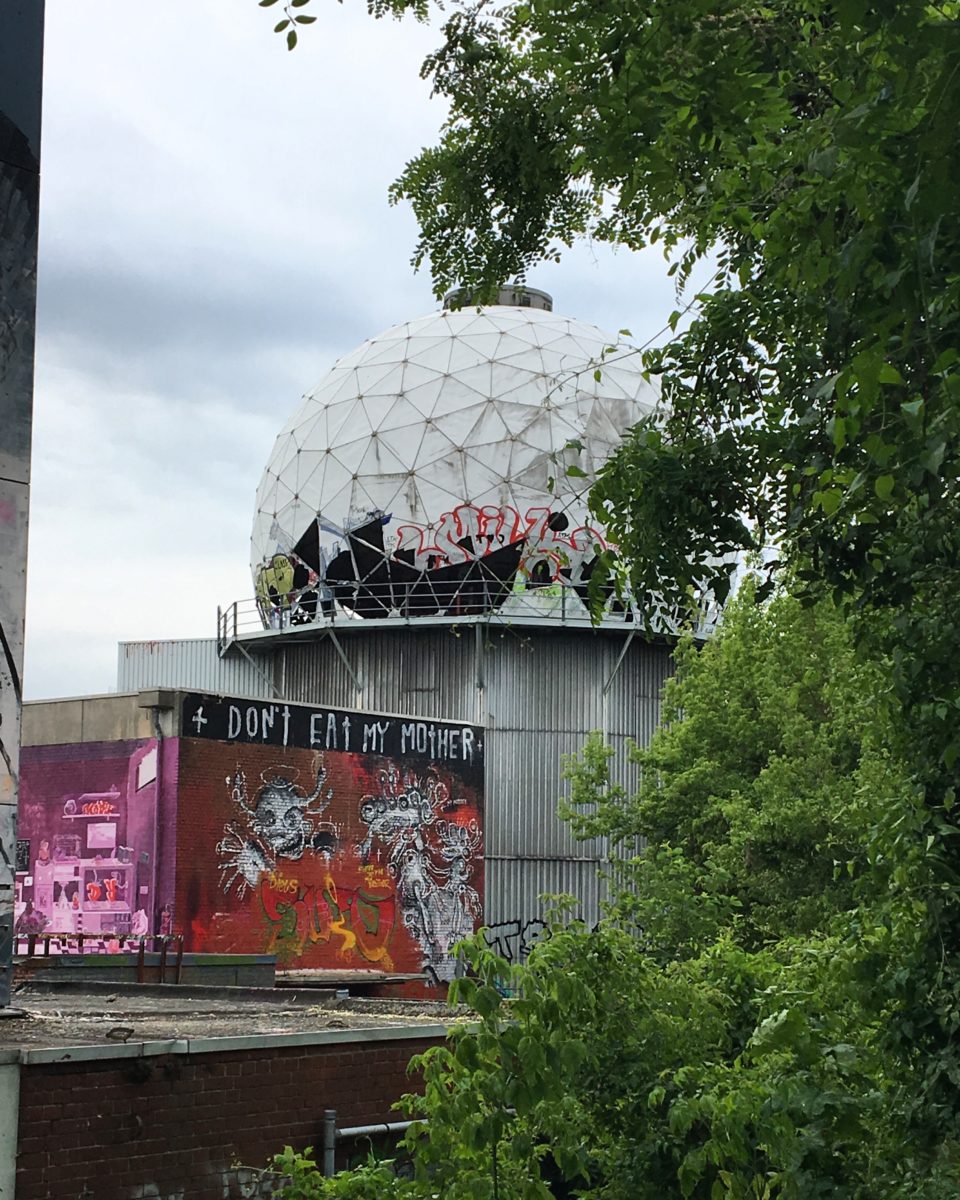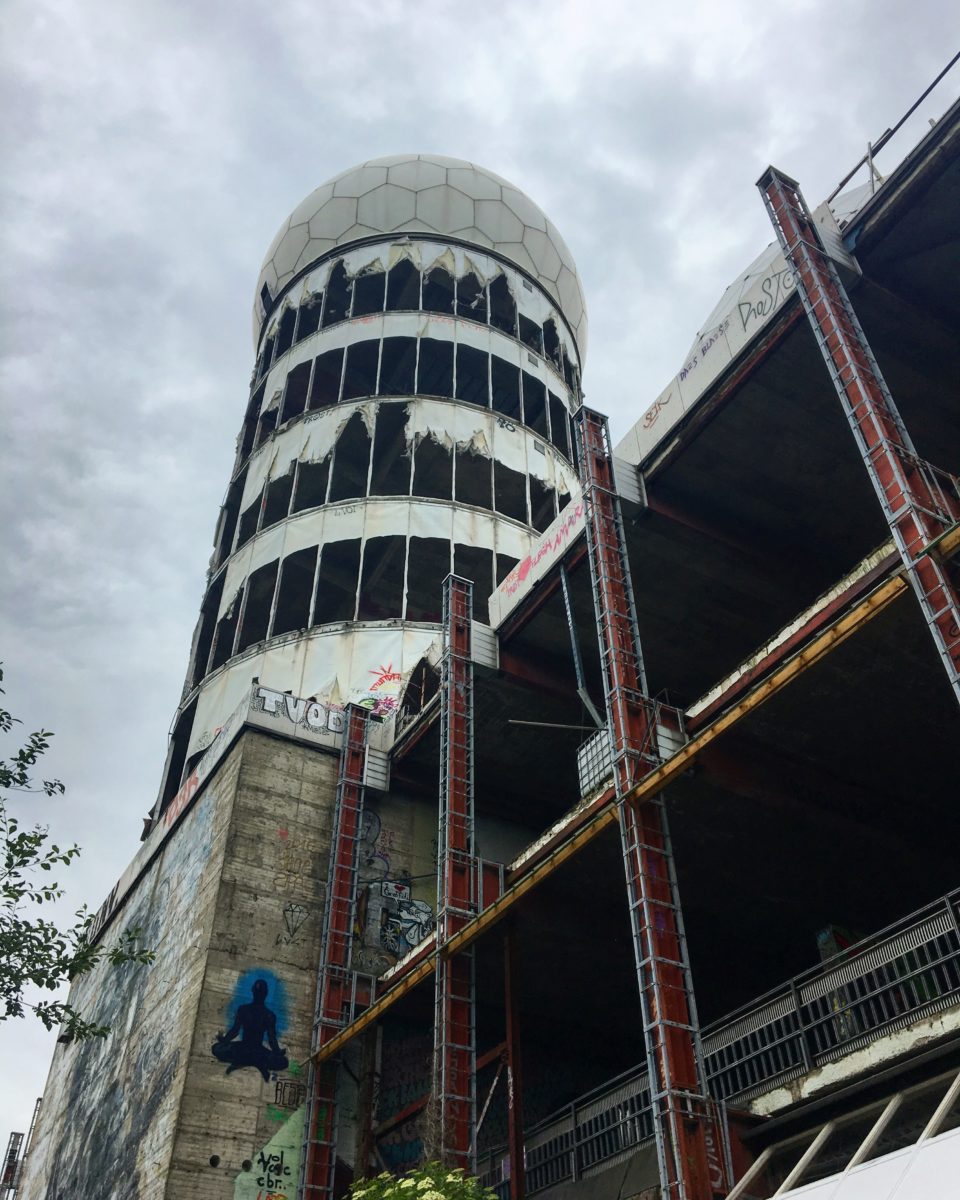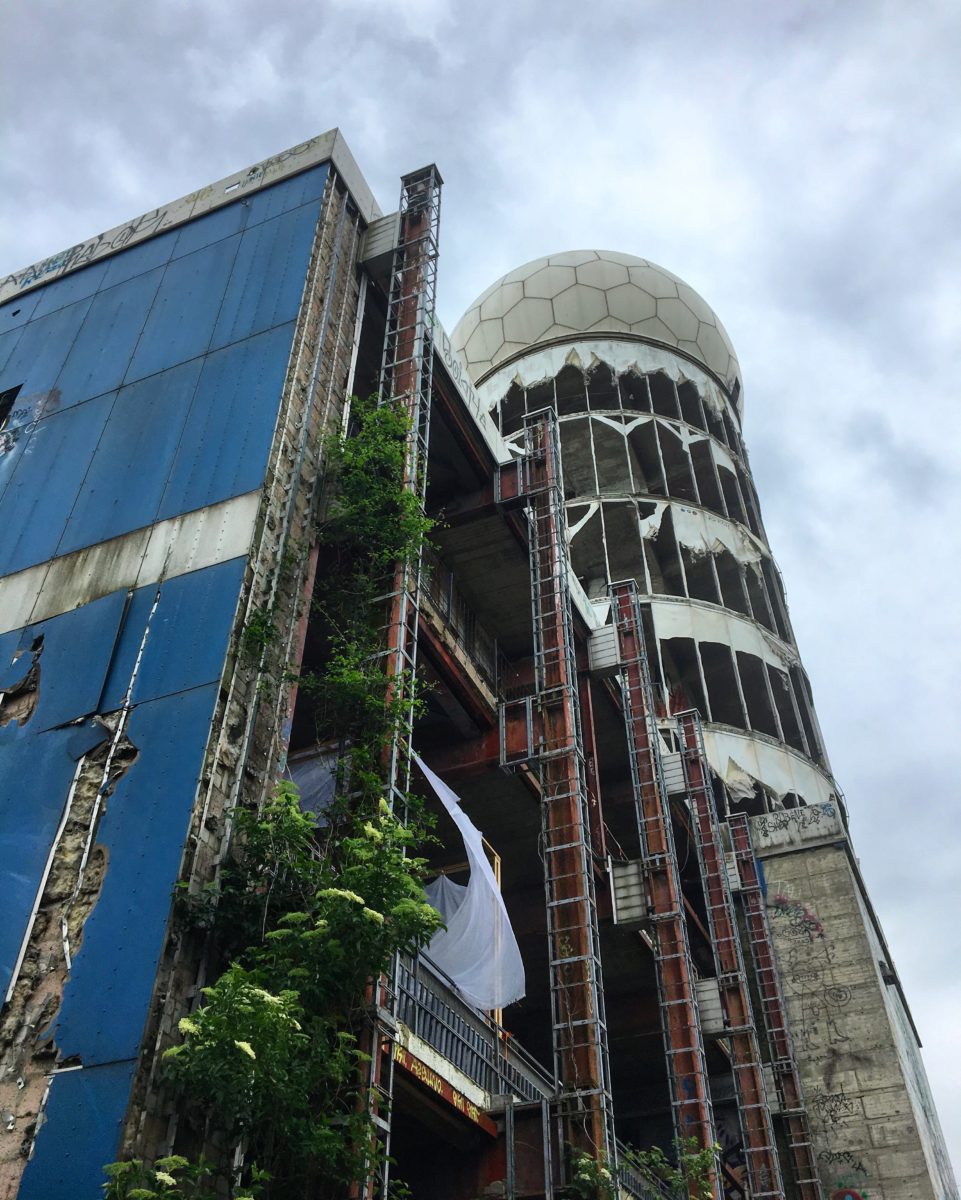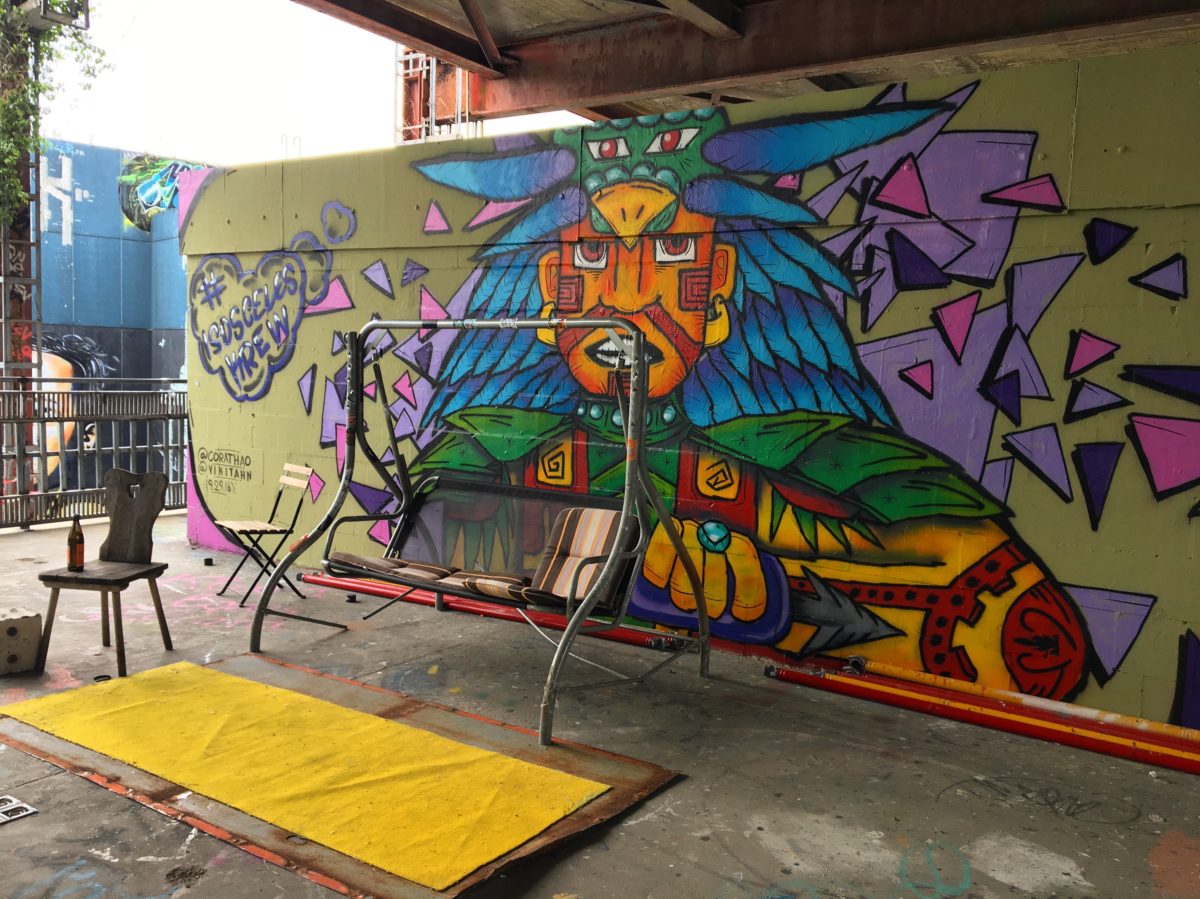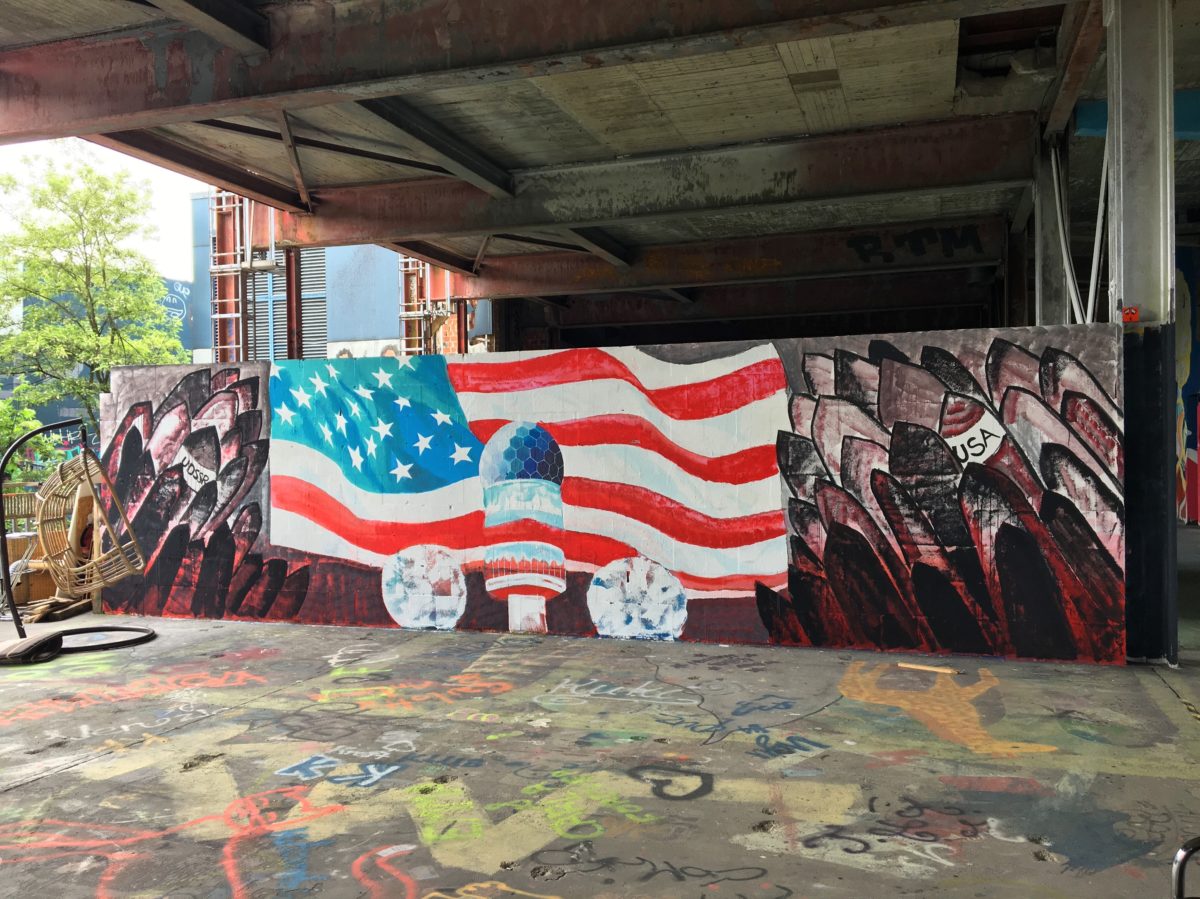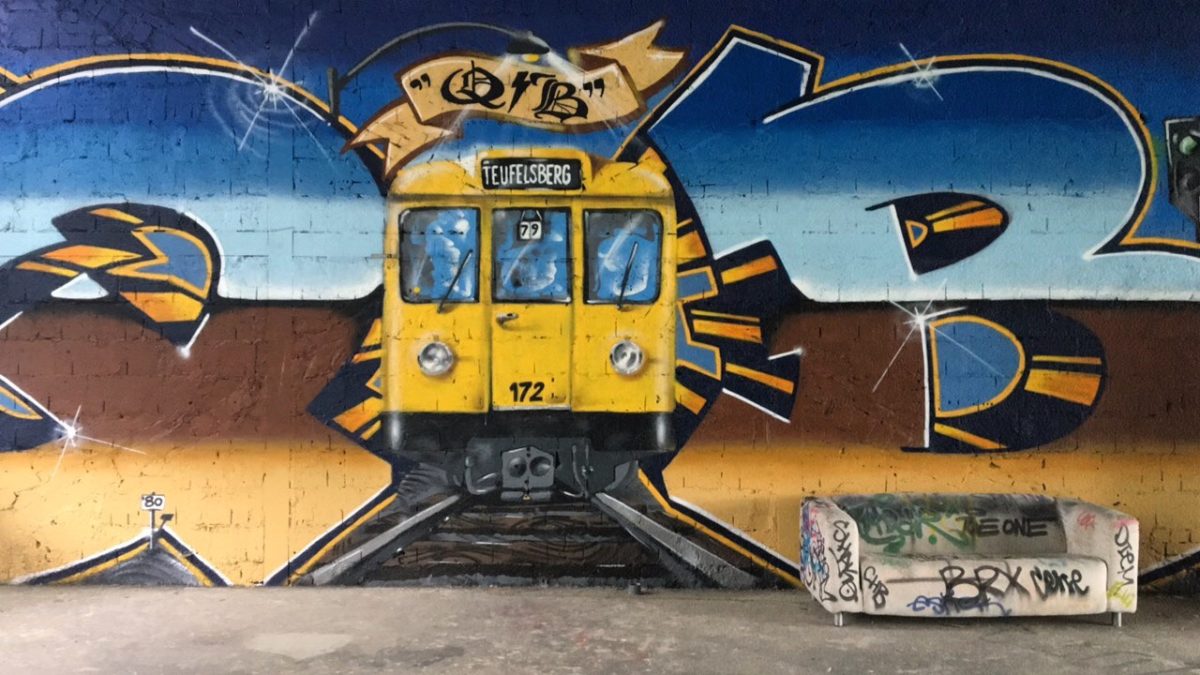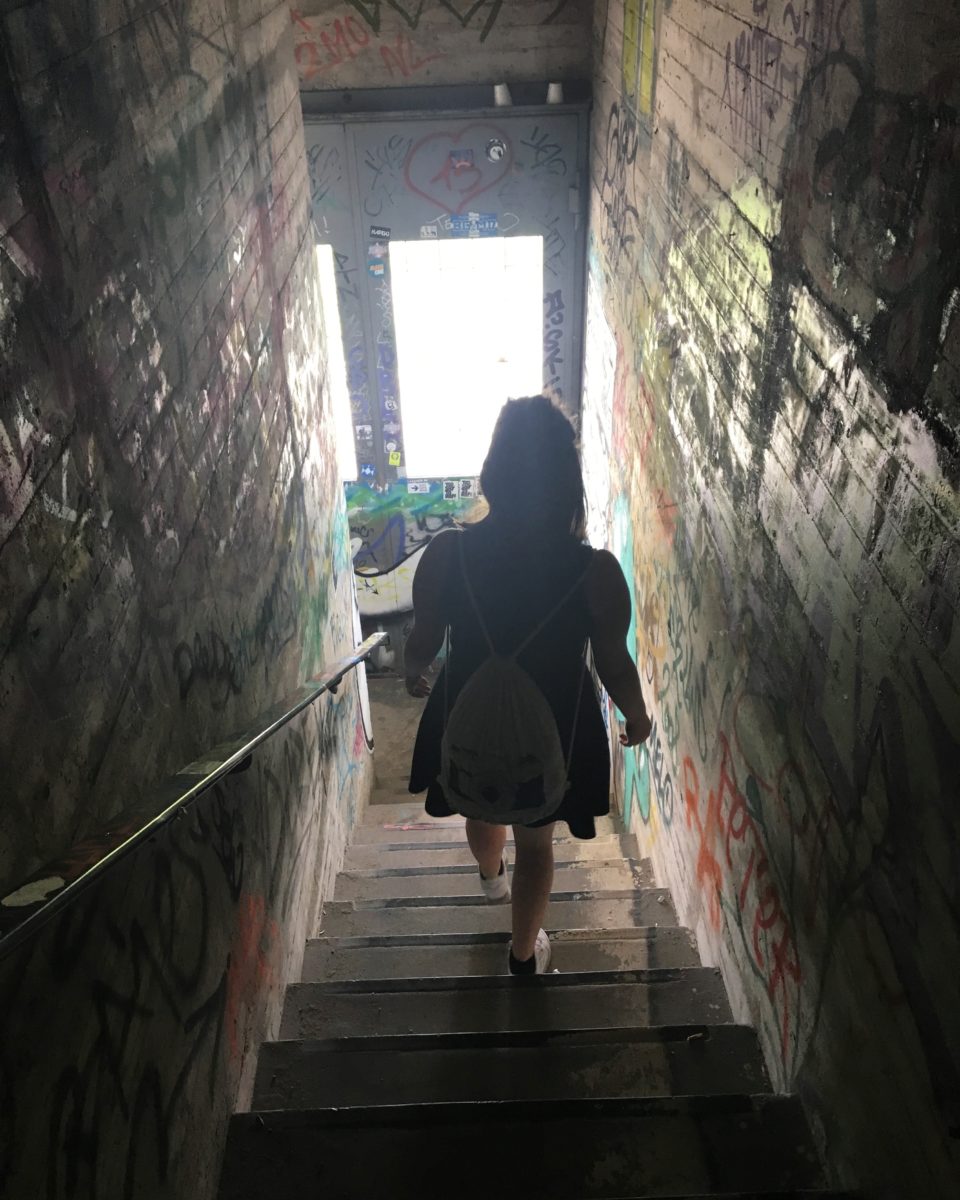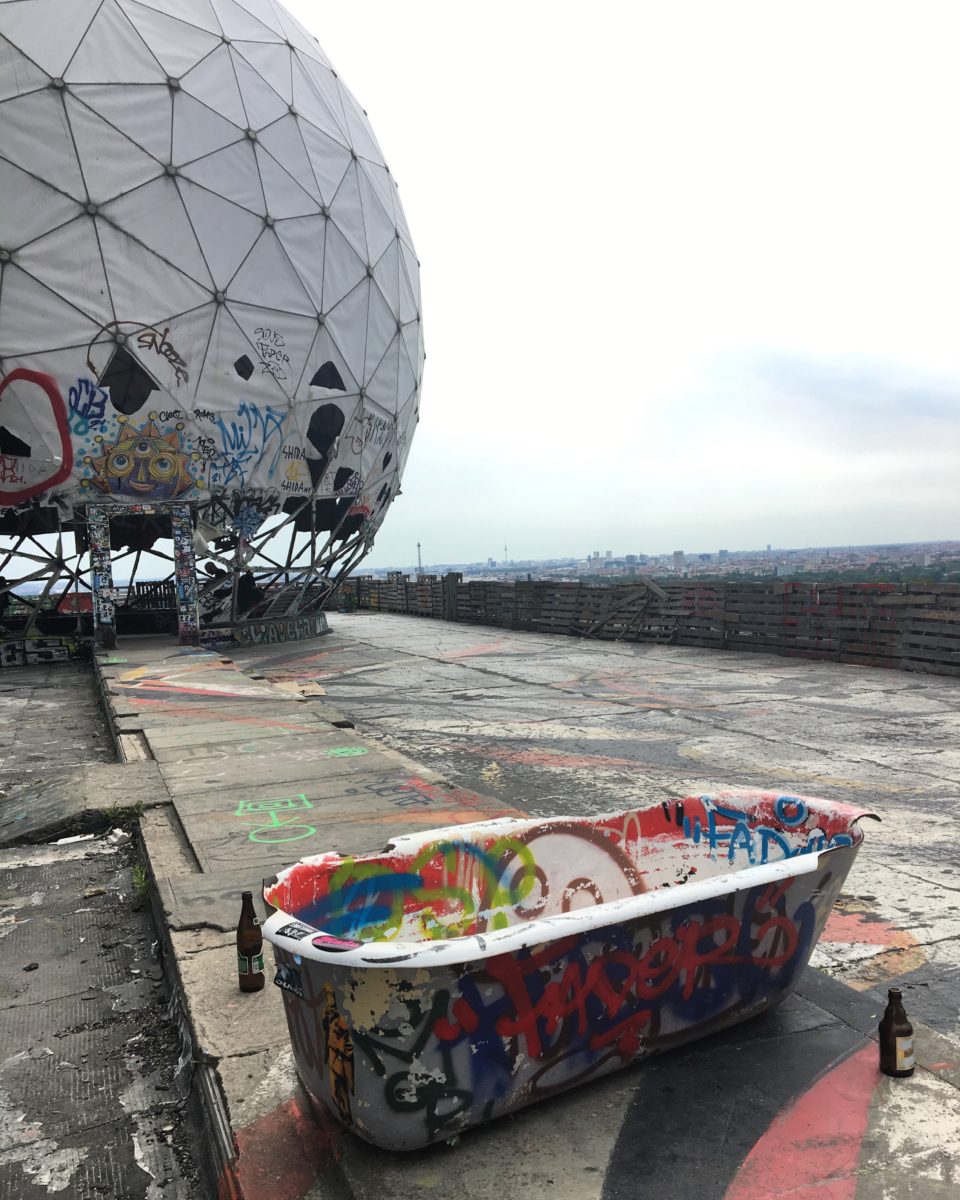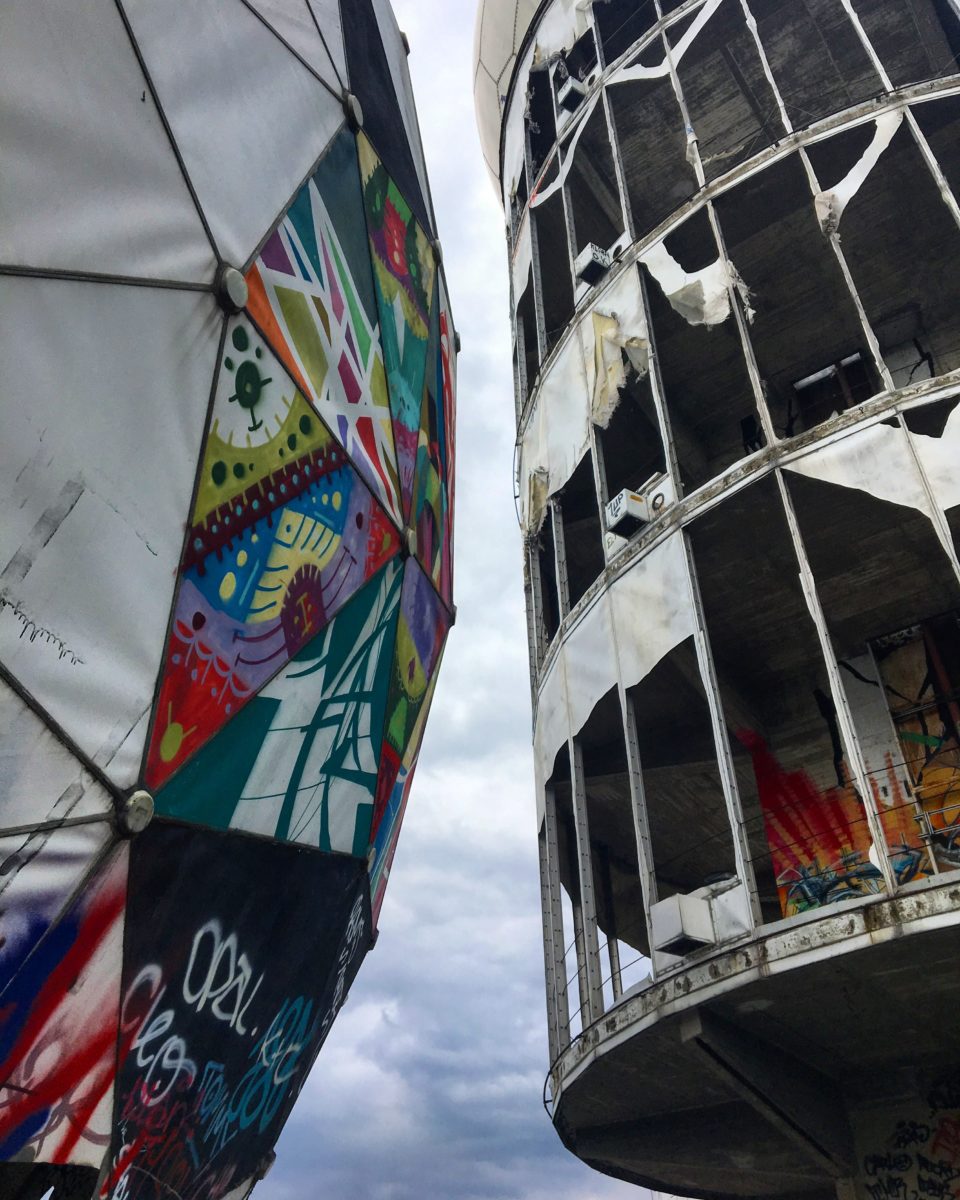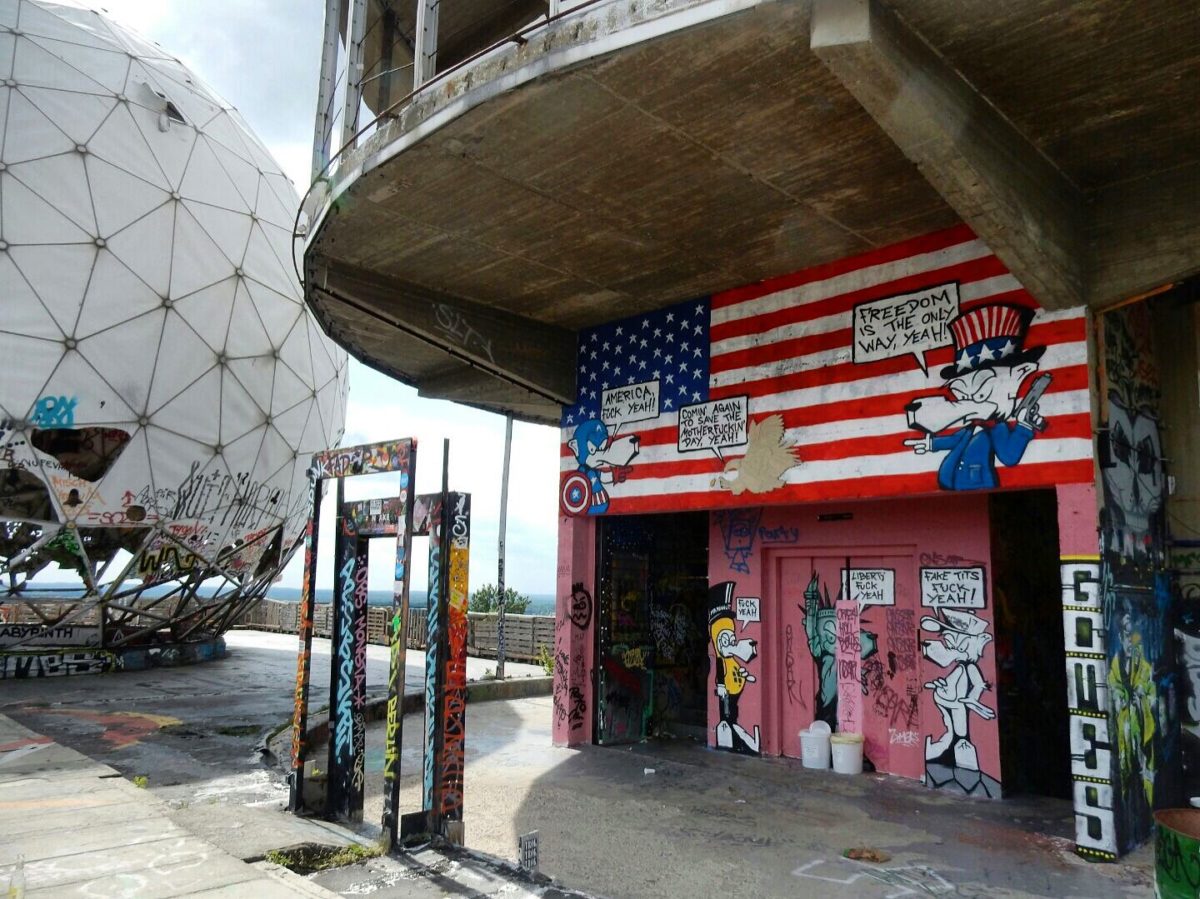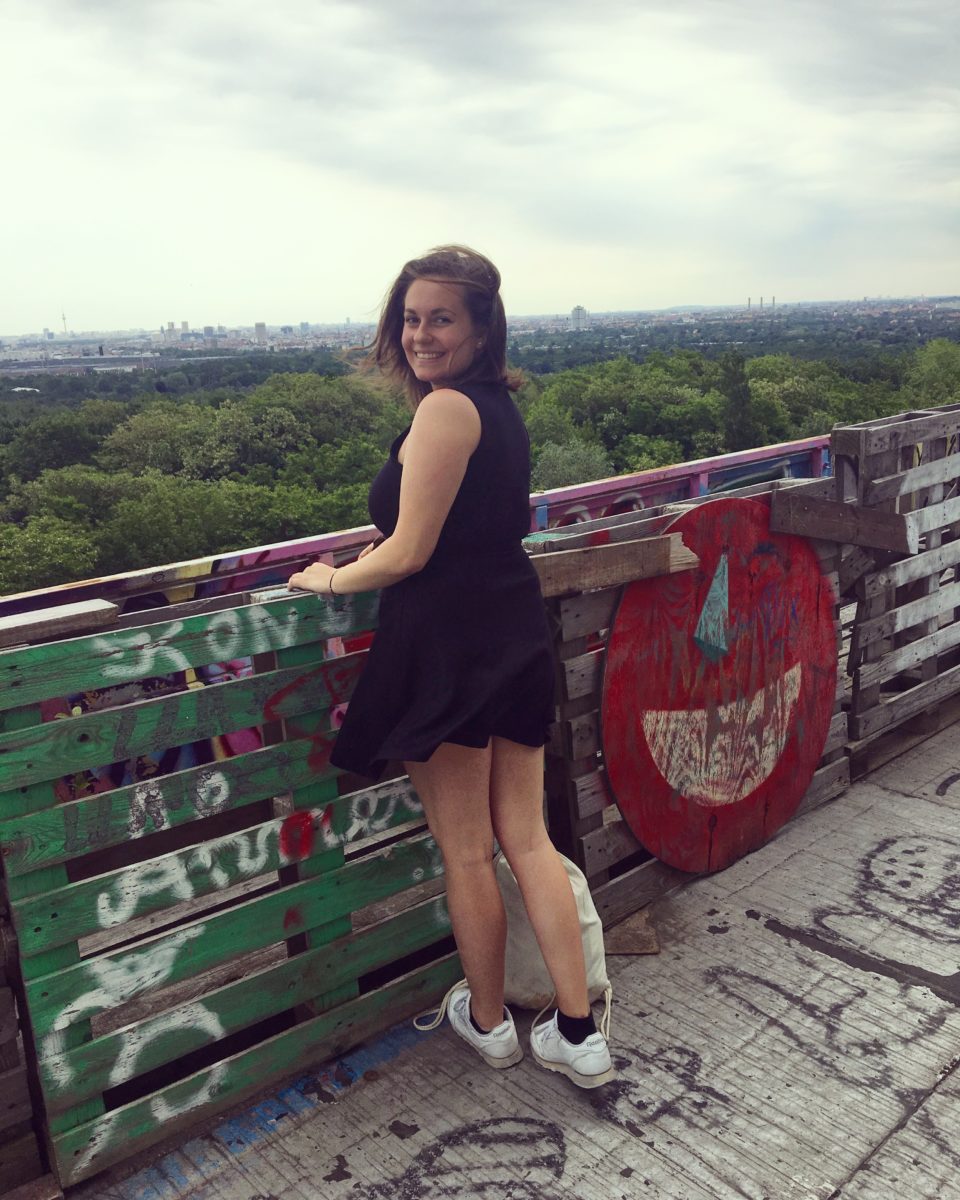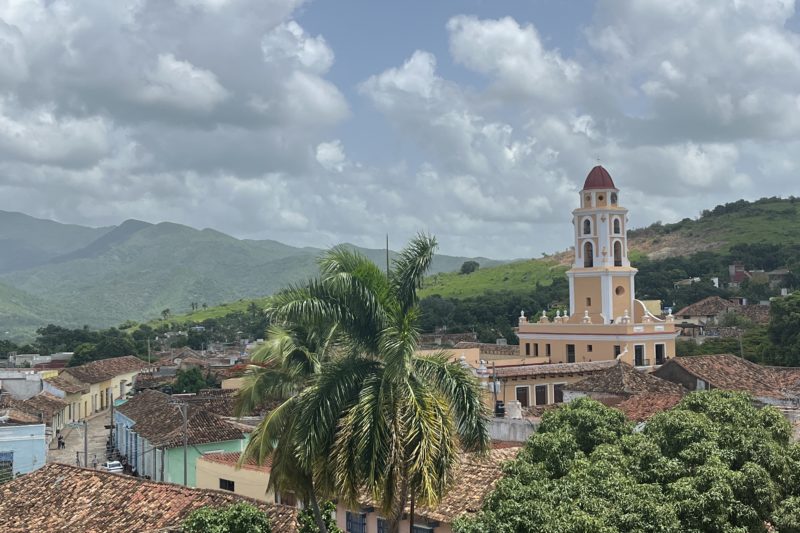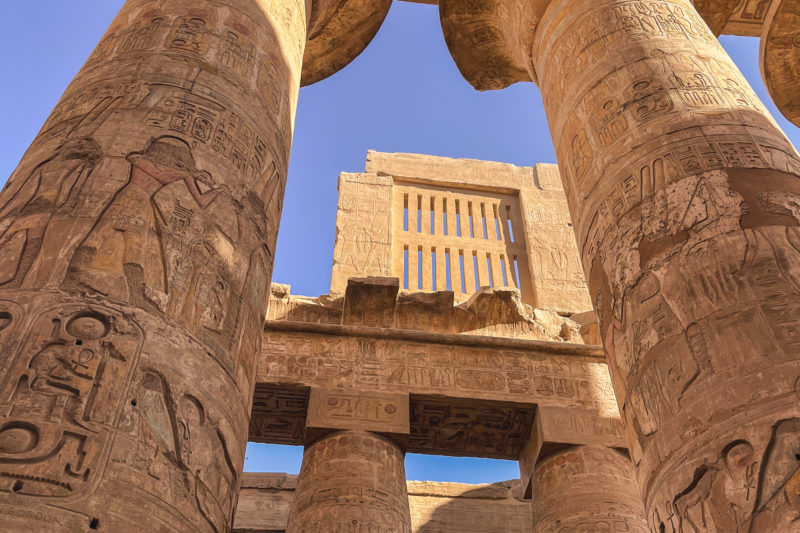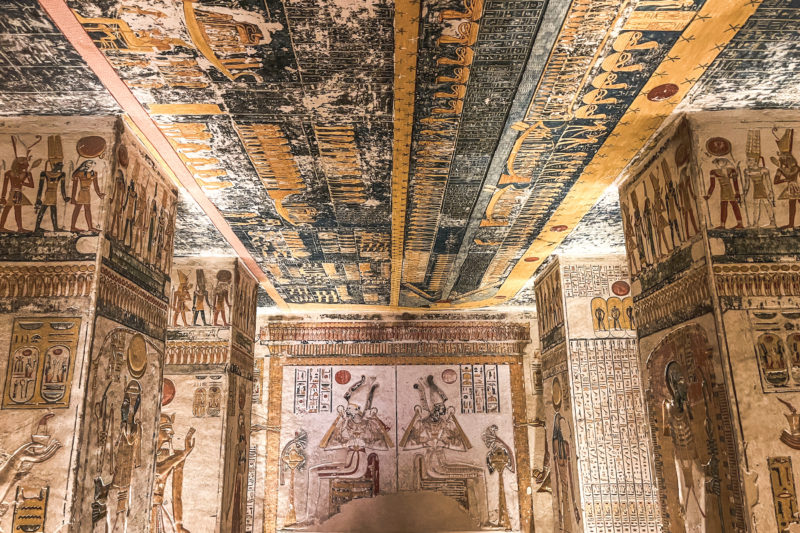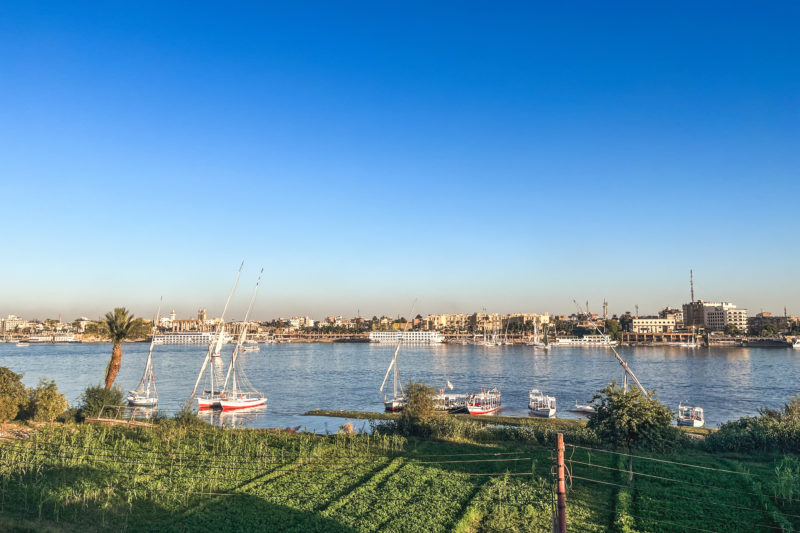Sunday morning, families are cheerfully wandering, by bike or on foot, elderly people do the same, sometimes at a nicer pace, in the largest forest of Berlin, Grunewald.
Letting the walkers go deeper into the forest, we amble on the main road when suddenly a wood panel tells us to take that direction (actually, we didn’t know which way was going to the top). Heading to the hilltop, we eventually arrived up: but not on the right hill…
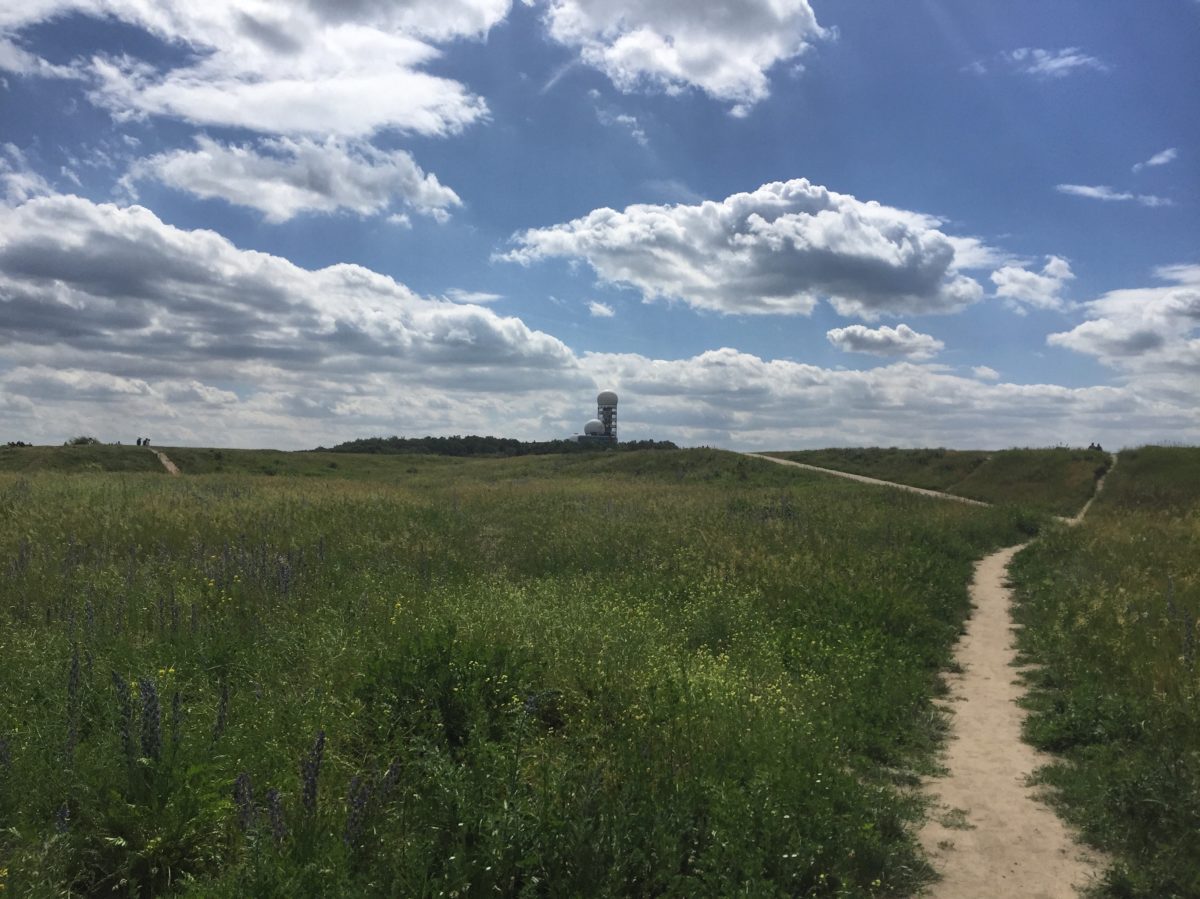
Indeed, the large and easily recognizable geodesic spheres of Teufelsberg literally appear in front us. From there, we walk to the top of the renowned Devil’s Mountain and come across a large fence where numerous signs assert that the place is abandoned and that legal action can be taken against anyone breaking in. Since the site has been opened in recent years, in exchange of a small sum, those signs are presumably remnants of years of neglect.
Finally, we follow the fence and arrive at the entrance, where, a little stunned, we understand that a road leads to it (the one I will use throughout my next visits).
To have the opportunity to enter the site, the sum of 6 euros (for students) is required as well as a signature. The person at the “reception” distinctly specifies that if something happens while visiting Teufelsberg, they decline any responsibilities. We have been warned…
Where have I taken us again ?
GHOSTS OF A NAZI UNIVERSITY
I can’t stop thinking about the young boys we met down below who were simply playing with the innocence of a child. It’s hard to imagine that under the hill on which they were playing, in the early 1940s, Albert Speer, the chief architect of the National Socialist Party, had undertaken the construction of a Nazi technical-military university. Thus, we find ourselves on the mountain where the future Nazis of the party were to be trained…
But where has this university actually gone?
The Allies had tried to destroy it in 1942, yet the school resisted. Then, in 1945, in the aftermath of the Second World War, the “Trümmenfrauen”, literally the women of the ruins, decided to clear the ruins caused by the bombing in order to rebuild their country. This clearing led to the construction of artificial hills, the “Schuttbergen” in German, of which Teufelsberg is one of the most famous.
COLD WAR THEATRE
One of the most famous, since as early as the 1960s, the Allies began inspecting the area to find out whether Teufelsberg, the highest point in West Berlin, was ideal for setting up an espionage station there. Although the Grunewald Forest belonged to the British occupation zone, it was the Americans who first set up a listening station there (the boundary of the zone was not far from the hill and they cooperated together in espionage).
The NSA (National Security Agency) thus opened one of its largest spy stations around 1961 (the year most often referred to in the documents I have read), which according to rumours was to be part of the ECHELON network, which designates the global system for intercepting public or private communications. Known as “Field Station Berlin” and used mainly to spy on the Eastern bloc (GDR and USSR), as from 1963, they built these big white domes to hide the antennas that intercepted Soviet signals… not very discreet though! However, they operated for more than 25 years, until the fall of the Berlin Wall and then the reunification of the two Germanies.
To learn more about other espionage facts, I highly recommend a visit to the German Spy Museum in Berlin, whose rich content is impressive and, above all, hyper captivating!
street art and Berliners theatre
For a long time abandoned, squatted, damaged, and vandalised, the Devil’s Hill was taken over many years later, in the early 2010s, by an association “Teufelsberg-Team” which decided to create a cultural and above all street art venue.
Like an open-air gallery, as soon as we enter the guarded area, any object or graffiti catches the eye. As a real paradise for lovers of street art, we didn’t know where to start. What’s more, I also appreciate the fact that the works are constantly being renewed, while leaving works that are timeless and appreciated by visitors. Each time I visit a new artwork fills me with wonder.
The former espionage base has left an industrial architecture, which makes it possible to discover huge rooms filled with tags and pieces of street art.
It is the central building, the one with the geodesic domes, that offers the greatest spectacle. You have to take the stairs on the side of the building to get to the first floor from where a central staircase leads to the top. Each floor is full of wonders to explore! We climb up to the top of the building (I advise you to take a flashlight or use your phone as the higher we climb, the less the stairwell is lit).
As I emerged from the stairs, I must say that, the first time, I was captivated by what was around me. Scraps of cloth flapping in the wind, half-broken and coloured domes, a bathtub and a bottle of beer left there, abandoned, and then, a view, this amazing view of the green forest and the surroundings that leaves me dazzled! By the way, my only desire is to come back on an organised excursion at sunset.
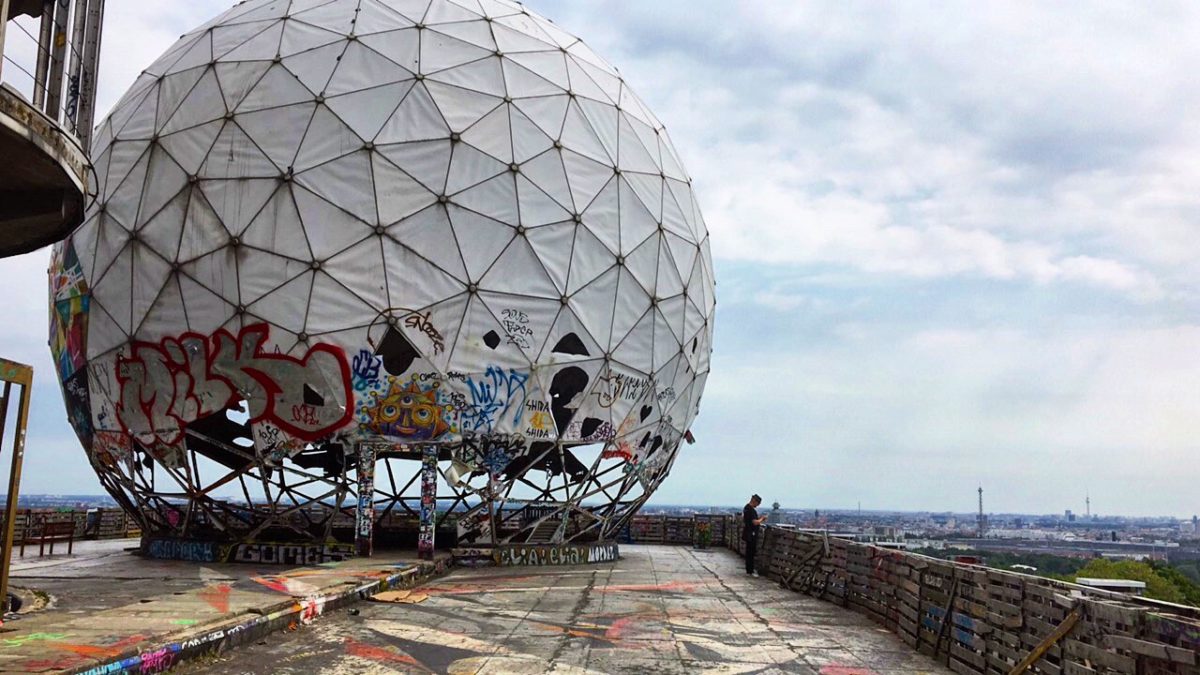
Afterward, a few more steps separate us to reach the central dome. Here, the acoustics are from another world, almost unreal. Every sound echoes and resonates with what seems to be forever. No tonality is lost and it is a real pleasure to let off steam by shouting anything and everything! A simple murmur remains assured as if the voices of the USSR were still whispering …
Teufelsberg has become one of my favourite places in Berlin during the course of my visits. Between a past of espionage and history, the Devil’s Mountain can be discovered, definitively out of time, through the magnificent works that decorate this place, like a theatre on contemporary German history.
If you still feel like discovering the surroundings of the forest, there are beautiful paths that run through the surroundings from one end to the other, just be careful not to get lost.
In addition, there are many other places in Berlin where you can explore abandoned places, this time with let’s say illegal entry, such as the amusement park, Spreepark. Definitely a place to discover on my next visit to the German capital.
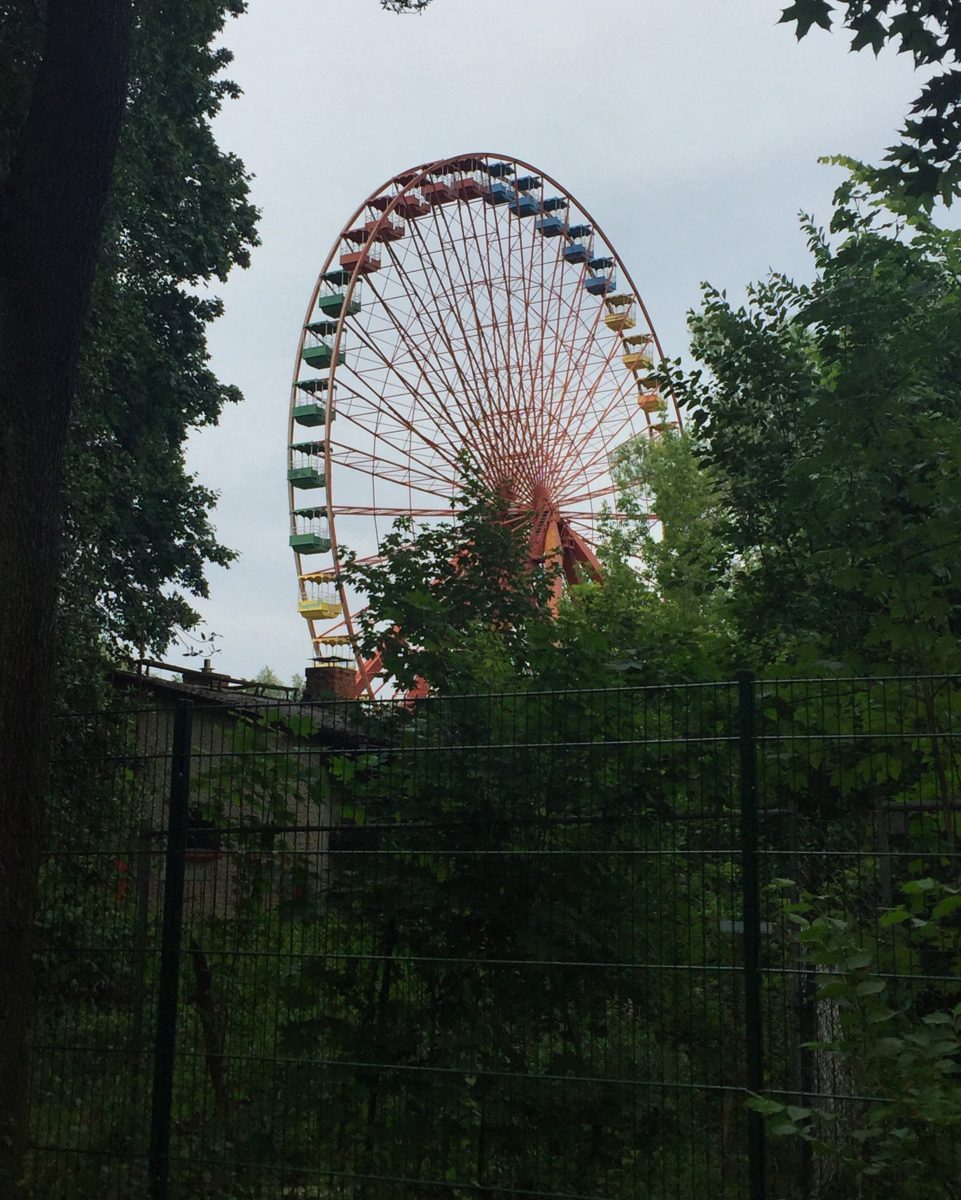
Information
How to get there: From Berlin, take the S-Bahn 5 (S5) in the direction of Spandau and get off at the Heerstrasse stop. On leaving the underground station, take the Teufelseestrasse directly on the left, which runs into the Grunewald forest and leads directly to the summit. It takes at least 30 minutes to get there on foot, for the fastest ones. Or if the road seems monotonous to you, feel free to take a footpath from a small car park on the right-hand side of the road after about 10 minutes’ walk and following the residential houses.
Opening: refer to the website, but the site does not open before 10:00 a.m.
Price: 6 euros for students and 8 for a normal ticket. When I first came, a simple stamp was used as a ticket but since 2017, real tickets have been distributed. Excursions, guided tours are also organised, see also the official website.
Official website: https://teufelsberg-berlin.de/
Teufelsberg on screen :
- In the series Covert Affairs, episode 12 of season 2 “Uberlin”.
- In the series Berlin Station, episode 9 of the 1st season “Thomas Shaw”.
To find out more :
